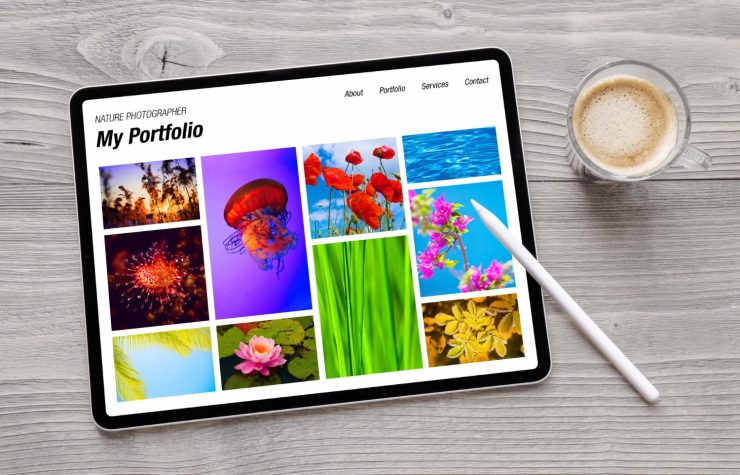How to Build a Personal Portfolio Website That Stands Out
In today’s digital age, having a personal portfolio website is essential for showcasing your skills and accomplishments. Whether you’re a freelancer, designer, developer, or creative professional, a personal portfolio website gives you the platform to display your work, stand out from competitors, and attract clients or employers. If you’re looking to make an impact online, it’s important to know how to design, structure, and market your portfolio effectively.
This guide will help you understand what makes a personal portfolio website successful, covering everything from platform selection to design tips and SEO best practices.
Why You Need a Personal Portfolio Website
Your personal portfolio website is more than just an online resume. It’s a tool for presenting your professional identity, showcasing your expertise, and proving your ability to deliver high-quality work. Here are a few reasons why you should consider creating one:
- Credibility: Having your own website gives you credibility and demonstrates professionalism.
- Visibility: It makes you discoverable online, helping potential clients or employers find you.
- Control: You have complete control over how your work is presented and the narrative around your projects.
- Growth: It allows you to regularly update your work and skills, showing that you’re actively progressing in your field.
Step 1: Choose the Right Platform
The first step in building your personal portfolio website is selecting the right platform. Popular options include:
- WordPress: Offers flexibility and SEO capabilities, making it ideal for professionals who want full control over their site.
- Wix: A user-friendly drag-and-drop website builder suitable for those with minimal technical skills.
- Squarespace: Another drag-and-drop platform that focuses on sleek design and ease of use.
For those comfortable with coding, platforms like GitHub Pages or using HTML, CSS, and JavaScript can provide full customization.
Step 2: Focus on Design and Layout
A personal portfolio website must be visually appealing but also functional. Here are some tips for a great design:
- Keep it Simple: Avoid overloading your website with too many elements. A clean, minimalist design keeps visitors focused on your work.
- Highlight Key Projects: Choose 3-5 of your best projects to feature prominently. Use high-quality images, descriptive titles, and detailed explanations for each.
- Responsive Design: Ensure your website looks great on all devices, including mobile. Most people will view your site on their phones, so mobile optimization is key.
- Clear Navigation: Make it easy for users to find what they’re looking for. Your portfolio should have a simple menu with sections like “About Me,” “Portfolio,” “Blog,” and “Contact.”
Step 3: Showcase Your Best Work
The core of any personal portfolio website is your work. You need to highlight your most impressive projects that align with the type of work you want to attract. Each project should include:
- Visuals: Use screenshots, videos, or mockups to visually represent your work.
- Descriptions: Write a concise description that explains the project’s objectives, your role, the process, and the outcome.
- Results: Whenever possible, include metrics or client testimonials that demonstrate the success of the project.
Step 4: Write an Engaging “About Me” Section
The “About Me” section is your opportunity to tell your personal story and connect with visitors. Here’s what to include:
- Professional Summary: Introduce who you are, your professional background, and what you do.
- Your Unique Value: Explain what sets you apart from others in your field.
- Call to Action: End with a CTA, such as inviting people to contact you for projects or collaborations.
Step 5: Include Strong Calls to Action (CTAs)
Your portfolio website should guide visitors toward taking action, whether that’s contacting you for work or following you on social media. Strong CTAs might include:
- Contact Me: A button leading to a form where potential clients can reach out.
- Download Resume: Offer your resume as a downloadable PDF for employers.
- Hire Me: Make it easy for people to inquire about your services with a “Hire Me” button.
Step 6: Optimize for SEO
Search engine optimization (SEO) is crucial for making your personal portfolio website discoverable. Here are some SEO best practices:
- Use Keywords: Include relevant keywords, such as “personal portfolio website,” throughout your site. Make sure they appear naturally in titles, headers, and body content.
- Optimize Images: Compress images for faster loading and include descriptive alt tags that improve SEO.
- Meta Tags: Write concise meta titles and descriptions for each page of your site, ensuring they include your target keywords.
- Internal Linking: Link to other pages within your website, like your blog or contact page, to improve site navigation and SEO.
Step 7: Keep It Updated
A stagnant portfolio can give the impression that you’re not active in your field. Regularly update your personal portfolio website with new projects, blog posts, and skills. This not only shows growth but also signals to search engines that your site is fresh, improving SEO.
Step 8: Add a Blog (Optional)
Adding a blog to your portfolio website is a great way to share insights, demonstrate thought leadership, and improve SEO. You can write about industry trends, project case studies, or personal experiences. A blog can also help you engage with visitors and establish authority in your field.
Summary
Building a personal portfolio website is a powerful way to showcase your skills and attract potential clients or employers. Start by selecting the right platform, focus on clean design, and ensure your best work is highlighted. An engaging “About Me” section and strong CTAs will help turn visitors into clients. Finally, don’t forget to optimize for SEO and keep your site updated to stay relevant.
With a well-crafted personal portfolio website, you can stand out in your field and achieve your professional goals.





Add comment